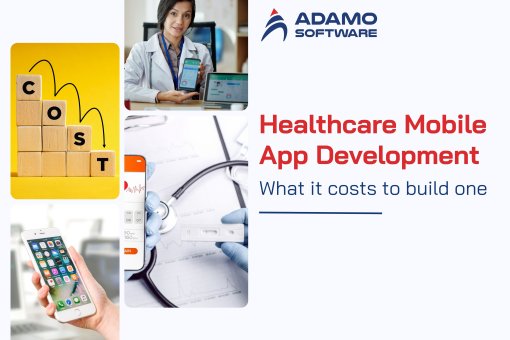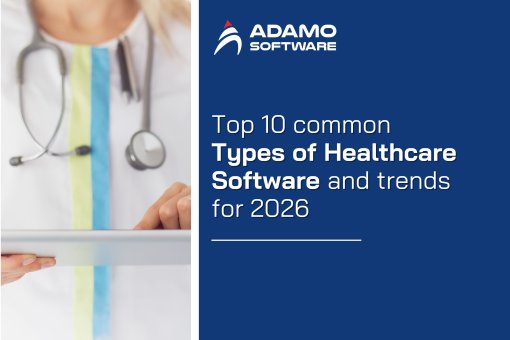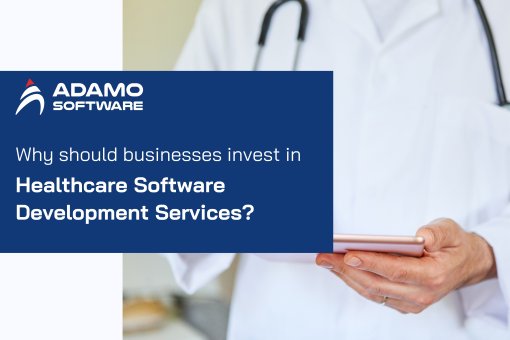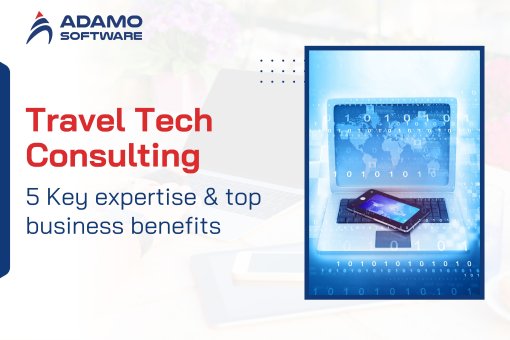- Collect patient-related vitals from multi-devices.
- Log medical symptoms related to shiver and abnormalities.
- Follow lifestyle and physical-related activities log (e.g. sleep time, eating habits) to define causes.
- Medication logs.
- AI-based chatbots provided by patients on the potential symptoms.
Healthcare Software Development
Remote Patient
Monitoring (RPM)
By offering customized healthcare software development services for remote patient monitoring (RPM) solutions, Adamo dedicated development team helps healthcare providers easily manage acute as well as chronic conditions.
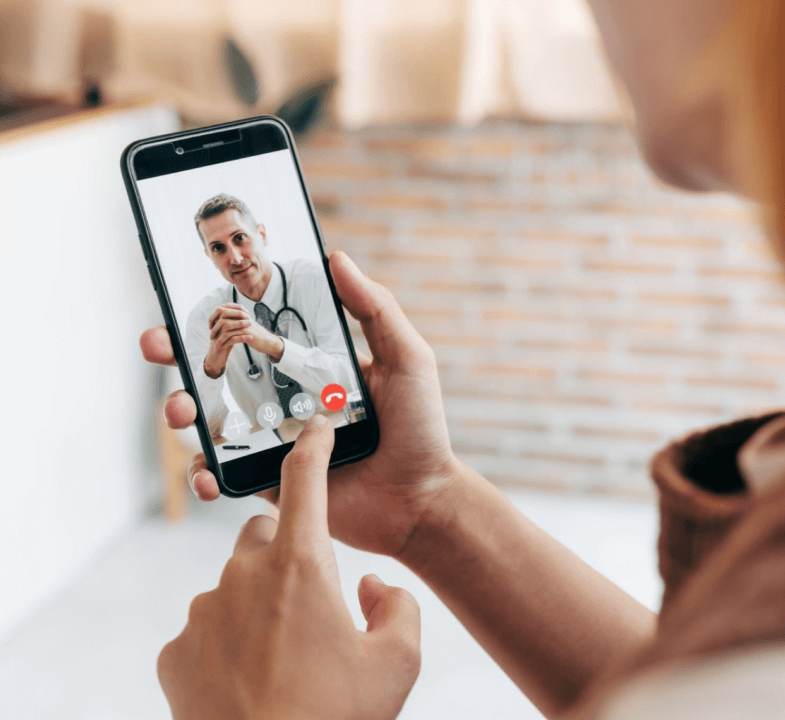
Remote Patient Monitoring (RPM) for Your Healthcare Practices
Help to Leverage Your Healthcare Service Institutions
with Our Software Solutions
By leveraging advanced technologies such as IoT devices, wearable sensors, and secure data transmission protocols, Adamo’s healthcare software solutions enable healthcare providers to remotely collect and analyze patient data.
With our services of building remote patient monitoring (RPM), and also experienced healthcare industry knowledge, you will receive technical-based capabilities from web-based to mobile app healthcare software solutions to provide better patient engagement and healthcare services.

How to Use Remote Patient Monitoring to Step Up Virtual Healthcare Service Business
Remote patient monitoring (RPM) acts as the type of telehealth that healthcare institutions and providers can manage their patients’ health records outside the traditional approaches through the use of digital-based medical devices, for example, weight scales, blood-related pressure monitoring, pulse oximeters, and blood-oriented glucose meters. The medical data collected from multiple devices will be electronically fetched to providers for further care and management.
Besides, RPM is historically used to monitor and measure distinctive symptoms of chronic-related conditions like cardiac diseases, diabetes and more. Patients can experience this RPM through wearable devices, for instance, holter that helps monitor heart rhythms, detect heart-related conditions and control cardiovascular. At Adamo, we understand how remote patient monitoring works and it is used in practical situations.
Why Does Remote Patient Monitoring Benefit Patients and Healthcare Providers?
As a premier software development company in Vietnam, Adamo understands the benefits of remote patient monitoring (RPM) software solutions, along with other healthcare-based solutions. We help providers to increase the ability to serve and monitor patient's health aspects from their home to remote areas.
Improved patient engagement
Through RPM solutions, it helps increase patient engagement during their health-tracking journey. RPM devices enable patient to manage promptly and understand their health conditions.
Increased healthcare quality services
Besides, RPM solutions also allow patients to more accessible to advanced healthcare services and providers accessing to relevant medical data; therefore, improving the service quality.
Achieve better access to healthcare services
As RPM software solutions enable patients to join their basic healthcare testing easily and healthcare professors are likely to treat more patients; thus, it increases accessibility and productivity.
Obtain patient assurance
RPM solutions aid to retain constant monitor which can promptly identify potential healthcare problems and issues in a timely manner.
Understand Architecture of the Remote Patient Monitoring Software System
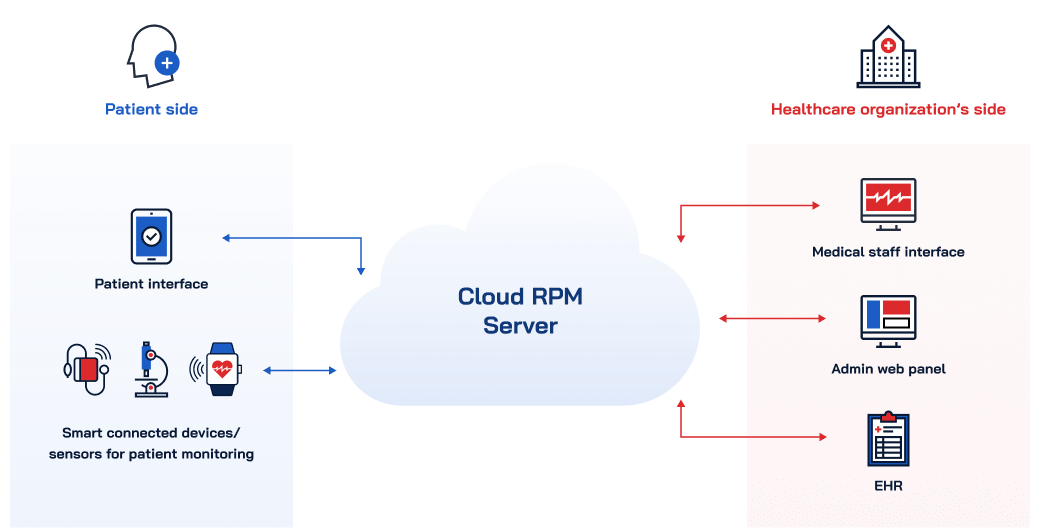
Admin Web Panel
To manage end-user setting utilized for medical professionals, staff and patients and confirm online appointment schedules and more.
Medical Staff Interface
Nurses, healthcare coordinators and physicians can access medical data of patients and alert them on identifying abnormalities, along with medical devices.
Patient Interface
Mobile apps for RPM software allow patients to monitor healthcare parameters, see symptoms and receive any alert on the potential health problem.
Cloud-based RPM
To process and analyze medical data from symptoms to impose changes in patient status and define healthcare causes.
Smart Connected Devices
To link patient vitals (e.g. blood pressure, body-related temperature) and also transfer them through protocols to the cloud-based RPM for analysis.
Create Remote Patient Monitoring Solutions with Prime Features
At Adamo, we show you a set of remote patient monitoring features that an ideal RPM must have. Here is an outline of the different functionalities provided by many healthcare organizations.
Patient health and lifestyle-tracking
RPM solutions with analytics and reports
- Analytics of patient-related vitals which are against reference parameters.
- Alert abnormal vitals to make priority on medical consultation.
- Identify patient symptoms.
- Automate RPM reports showing trends in the patients’ health current state or factors impacting on their health.
- In-app dashboard (e.g. patients’ vital history, analytics, and real-time measure and more).
Cloud-based managing of RPM devices and configuration
- Integration of RPM solutions with health-tracking devices.
- Configure of RPM-related parameters.
- Alerts on patients’ symptoms.
- Identify device failures (e.g. by using unusual activity, potential failures).
Virtual communication between patients and physicians
- Online medical consultations with chronic-based diseases to identify abnormal vitals and adjust medical care plans.
- Provide non-urgent medical consultations on symptoms and medical device operations.
Accessibility
- Text-to-speech methods to enhance visually-demonstrated information.
- Voice-based control with vision impairments.
- Responsive and high-contrast mobile app design.
Patient-related data security
- Encrypting RPM-related data, telemedicine appointment’s records.
- Role-based accessibility for patients, medical staff and admins.
- User authentication.
- HIPPA regulations.








